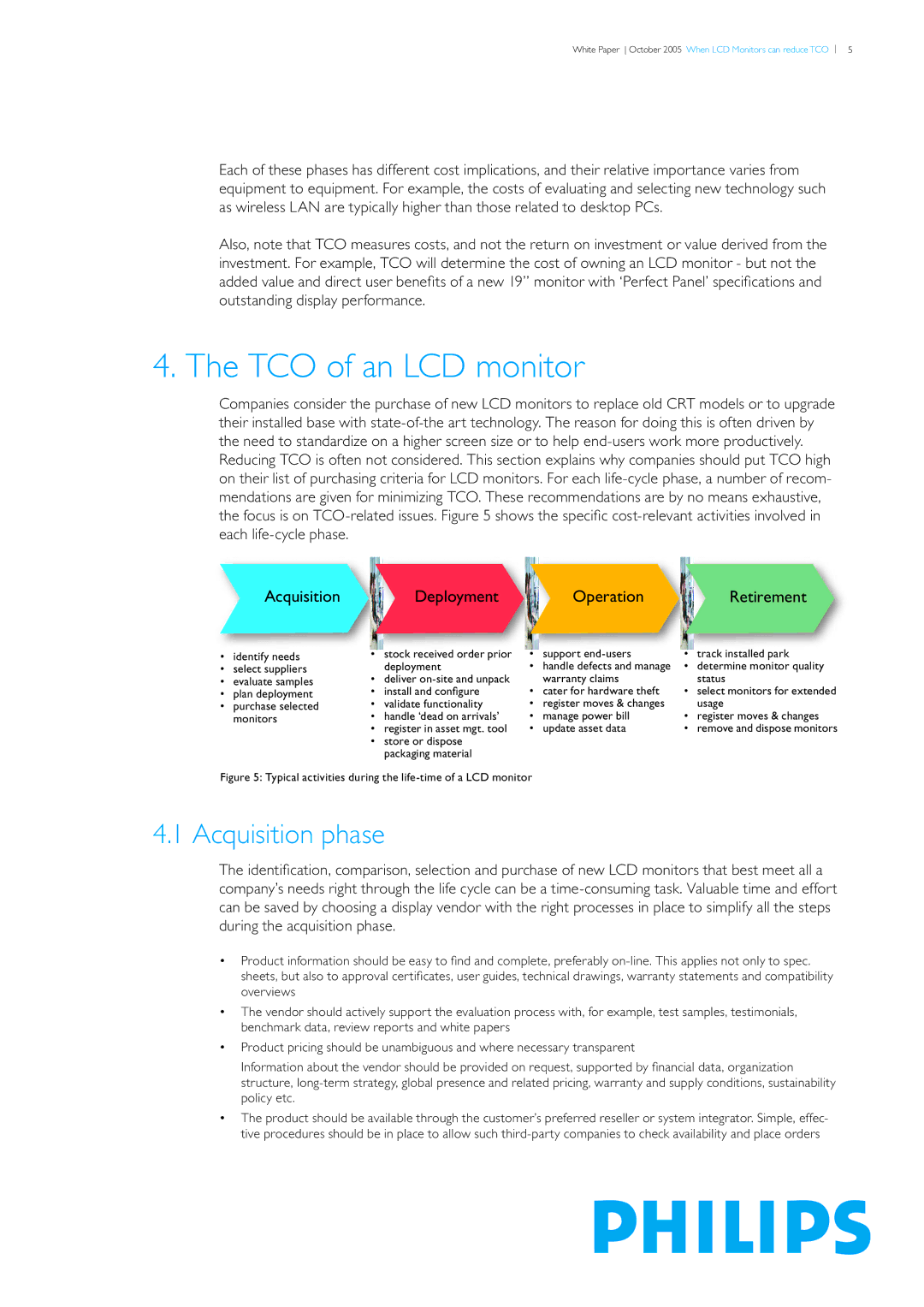
White Paper October 2005 When LCD Monitors can reduce TCO 5
Each of these phases has different cost implications, and their relative importance varies from equipment to equipment. For example, the costs of evaluating and selecting new technology such as wireless LAN are typically higher than those related to desktop PCs.
Also, note that TCO measures costs, and not the return on investment or value derived from the investment. For example, TCO will determine the cost of owning an LCD monitor - but not the added value and direct user benefi ts of a new 19” monitor with ‘Perfect Panel’ specifi cations and outstanding display performance.
4. The TCO of an LCD monitor
Companies consider the purchase of new LCD monitors to replace old CRT models or to upgrade their installed base with
Acquisition
•identify needs
•select suppliers
•evaluate samples
•plan deployment
•purchase selected monitors
Deployment |
| Operation |
| Retirement |
• stock received order prior | • | support | • | track installed park |
deployment | • handle defects and manage | • | determine monitor quality | |
• deliver |
| warranty claims |
| status |
• install and confi gure | • cater for hardware theft | • select monitors for extended | ||
• validate functionality | • register moves & changes |
| usage | |
• handle ‘dead on arrivals’ | • | manage power bill | • register moves & changes | |
• register in asset mgt. tool | • | update asset data | • remove and dispose monitors | |
• store or dispose |
|
|
|
|
packaging material |
|
|
|
|
Figure 5: Typical activities during the life-time of a LCD monitor
4.1 Acquisition phase
The identifi cation, comparison, selection and purchase of new LCD monitors that best meet all a company’s needs right through the life cycle can be a
•Product information should be easy to fi nd and complete, preferably
•The vendor should actively support the evaluation process with, for example, test samples, testimonials, benchmark data, review reports and white papers
•Product pricing should be unambiguous and where necessary transparent
Information about the vendor should be provided on request, supported by fi nancial data, organization structure,
•The product should be available through the customer’s preferred reseller or system integrator. Simple, effec- tive procedures should be in place to allow such
